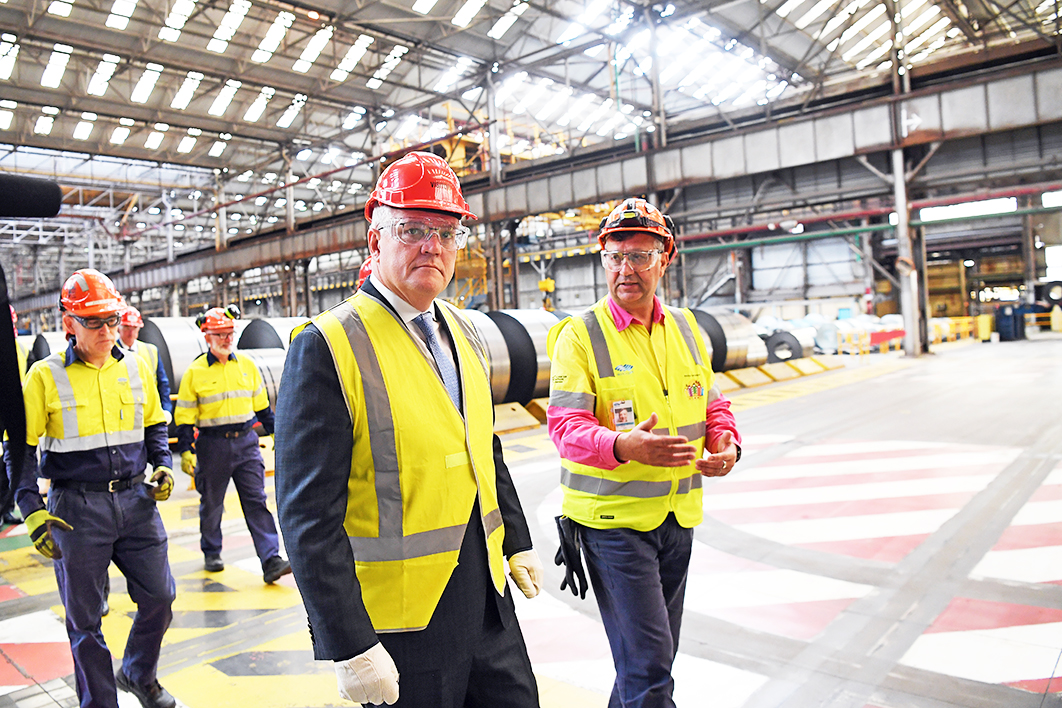More than 240,000 jobs have been lost in manufacturing since 1990. Back then, 14 per cent of the workforce was employed in that sector; it’s less than half that today. These statistics fill many Australians with horror. But to look at manufacturing without looking at what’s happened in the rest of the economy, and understanding why it’s happened, is to look at the problem with only one eye open. The government’s attempt to pick winners in manufacturing risks causing more harm than good.
While 240,000 jobs have been lost in manufacturing since 1990, more than five million jobs have been created elsewhere in the economy. Almost 1.1 million jobs were created in healthcare and social assistance. More than 800,000 jobs were created in professional, scientific and technical services. Almost 600,000 jobs were created in construction.
While the employment share of manufacturing has halved since 1990, employment shares have increased substantially in our biggest services industries. It doubled in healthcare and social assistance, arts and recreation services, accommodation and food services, administrative support services, construction and education and training. For professional, scientific and technical services, the employment share has tripled.
The transition from manufacturing to services is not unique to Australia. Although it has been more pronounced in Australia, it is happening in practically all developed countries. Manufacturing represented a third of all jobs in the United Kingdom in 1960 and just one-tenth today.
There were several reasons for this shift in Australia.
On the demand-side, Australian households demanded more services as our incomes rose. We demanded more childcare as workforce participation increased and more healthcare and aged care as our population aged.
On the supply-side, the spectacular rise of East Asia has seen its share of global manufacturing more than double since 1970. Through trade, this meant Australia could specialise: importing cheaper manufactured goods from abroad and focusing our scarce labour and capital resources on producing the services that were in high demand, that earned us more money and in which we had a stronger international advantage.
The boom in Asia also meant increased demand for our mining resources. The higher Aussie dollar sped-up the transition, making our manufacturing exports less competitive overseas while giving households increased purchasing power to import goods from abroad.
It follows that Australia’s transition from manufacturing to services was no coincidence. It was a transition made in response to structural changes that are still with us today. It was a transition that made us richer and created more jobs, particularly given that the services sector is more labour intensive than manufacturing. This raises several problems when it comes to politicians’ obsession with manufacturing and the government’s recent plan to use taxpayers money to support the sector.
First, it means politicians are favouring a sector that employs relatively few people compared to the rest of the economy. Manufacturing is now only Australia’s seventh-largest employer. It employs half as many people as healthcare and social assistance and retail trade, and a third fewer people than construction, professional service and education and training. If the goal is to support workers, it makes more sense to support the sectors where most of them are employed.
Second, if goal is to support the industries and people hit hardest by Covid-19, then the manufacturing sector isn’t the best place to start. Retail trade has been hit hard by government lockdowns, education and training is in crisis from the loss of international students, and women — who have disproportionately shouldered the burden of the Covid economy — are overrepresented in the healthcare and social assistance sector, not in manufacturing.
The bigger problem is that any attempt to shift businesses back into manufacturing means shifting businesses against the economic tide. The structural forces that caused the transition from manufacturing to services in the first place haven’t gone away. Trying to return to the past means pushing the economy’s resources into a sector that is less profitable and less productive.
The prime minister has promised more details on the manufacturing strategy in the budget. But at its core, we know, is a plan to support selected industries within the manufacturing sector. Not only do governments have a terrible history in trying to pick winners — something this one is also doing in energy and education — it risks creating permanent subsidies that are difficult to unwind, distorting the economy by misallocating resources, and failing to bring in private investment anyway if businesses think the support is only temporary.
So why do politicians remain obsessed with manufacturing? Fact is, promising to boost manufacturing is seen as good politics. You can’t go ten pictures into Scott Morrison’s Instagram account without seeing him in hi-vis. But the economic reality is very different. Most Australian’s don’t wear hi-vis to work, and have never done so. If the goal is to support workers, support women, support those hit hardest by Covid-19 and support growth industries of the future, the government needs to focus on services. •




